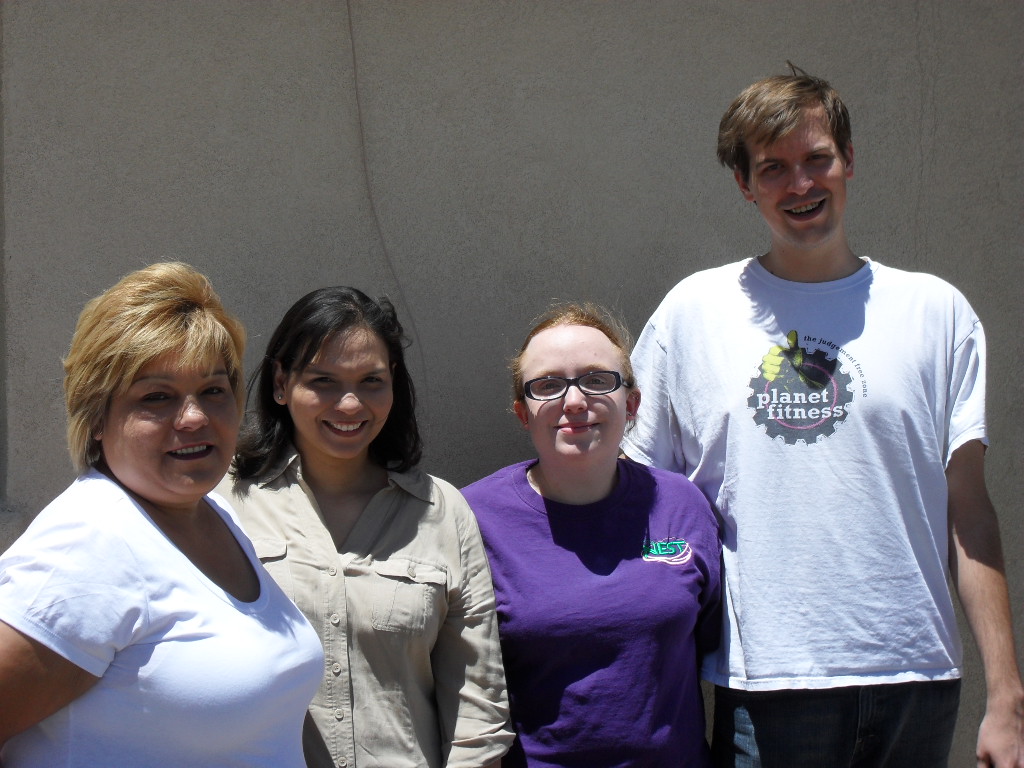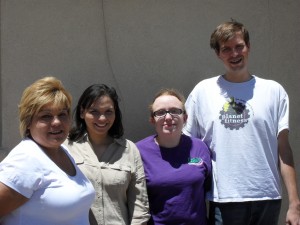By Michael Hoppal, HEAL Staff Writer
As the staff writer for Help End Abuse for Life (HEAL) and The Nest, my weekly schedule does not necessarily scream complexity. Working at HEAL has not been terrifically different from my other jobs, really. I complete assigned tasks ranging from attending committee meetings, interviewing donors and writing the first draft of our weekly article for review and final editing by our Executive Director. The job does not come complete with attached nobility nor does it include knowledge of crisis management, domestic violence intervention programs or shelter operations. Until recently, I was no more qualified to act as an advocate to survivors than to build a spaceship.
I was one of four lucky employees of HEAL who got to go to Las Cruces for a recent advocacy training course. I was accompanied by Zia, The Nest’s newest Resident Advocate, and Wellen and Dora, Sweet Charity’s long-serving retail staff. Together, we traveled to attend the three-day workshop component of the New Mexico Coalition Against Domestic Violence’s 40-hour core training.
The training was an interesting experience. We were joined by approximately 20 other people, each working at different shelters and in different services across New Mexico. Sitting in a roomful of people so passionate about their work is inspiring and motivating. I would dare even the coldest of hearts to leave this training without a fire in his or her belly.
Our training was also a unique experience. The NMCADV training has recently been upgraded in two ways, meaning we were the guinea pigs for the Coalition. Of the 40-hour training, half were done entirely online through a series of webinar recordings, electronic documents and videos. The remainder – the workshop we attended – was almost entirely made up of exercises. Nearly every minute in class was spent practicing new skills with classmates, working through exercises and having open discussions.
The skills we were given are also based on new, research-based developments in the field of intervention and advocacy. Instead of learning how to get batterers to stop being abusive or how to get victims to leave their abusers, we learned about tools like empathetic listening and supporting the independence and decisions of survivors.
The most important take away from the training was that as advocates, we do not try to pull people out of the hole. We get down into the hole and sit there with them until they’re ready to climb out on their own. My approach to relating to people, particularly those in crisis, has changed. Even with friends, I am going to stop trying to “fix” them altogether. I will also wait to give advice or try to help until I have been able to understand what they are feeling. I think people stop listening as soon as they think they’ve found a solution, but it’s impossible to find a solution in that short of time…and you immediately ignore the rest of the relevant information that can help you help them.
We are grateful for what we learned in our training and for the wonderful conversations we had with our fellow advocates. Domestic violence intervention has historically been based from a place of women helping women and friends helping friends. While advocates get help from counselors, psychologists and social workers, our field is new and constantly growing and evolving. We appreciate the privilege to be at the forefront of the developing methods and look forward to bringing our new knowledge back to our work, our organization and our community.
Pictured are HEAL’s Advocates Dora Cofer, Wellen Chambers, Zia Miner and Michael Hoppal.



